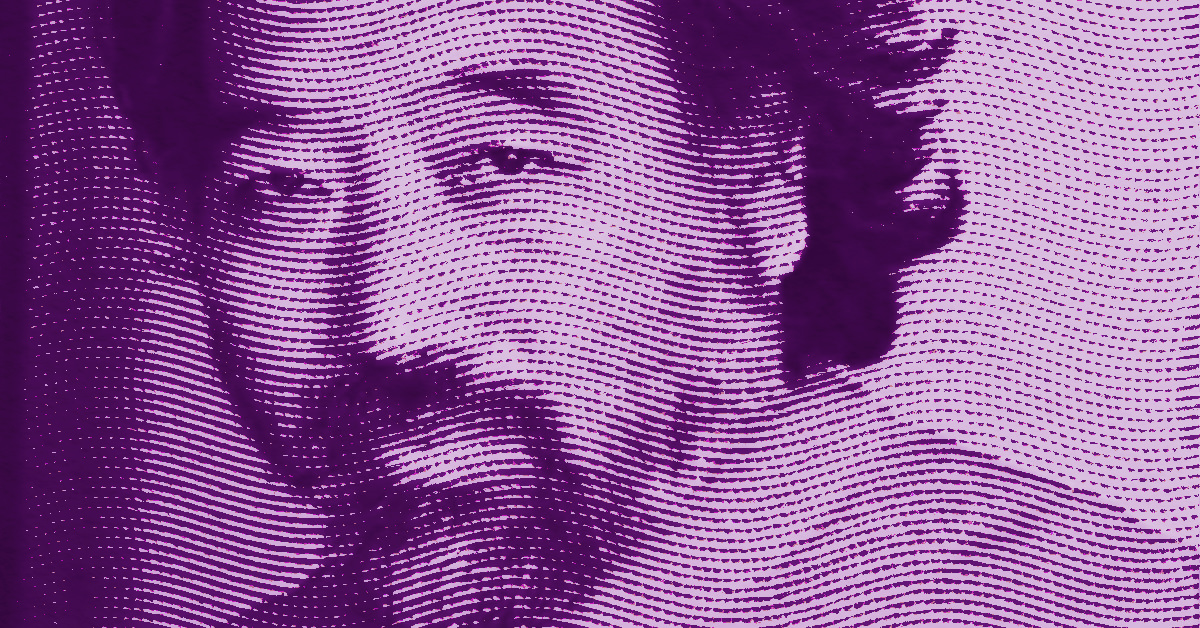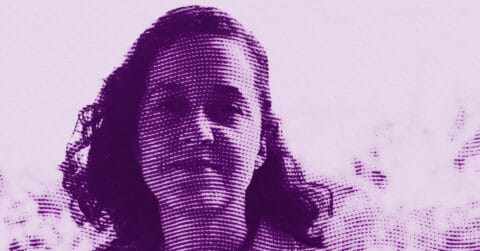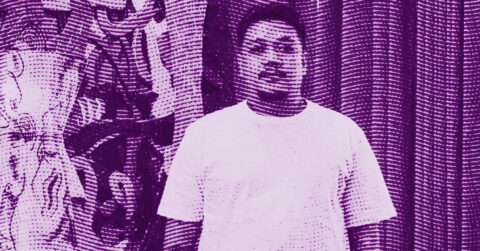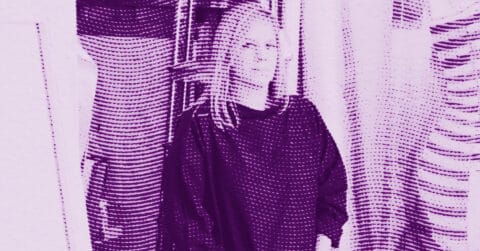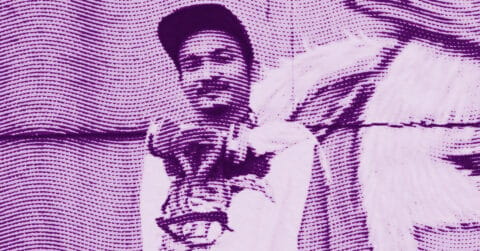Listen to me carefully, you bunch of snobs, for it is time to talk about Liu Jingyun, this shadowy artist who wields the brush as others wield words, creating on silk and paper a universe where woman is no longer merely an object of contemplation, but the subject of a deep aesthetic quest. Born in 1964 in Hebei province, more precisely in Xianghe county, Liu Jingyun has established himself over the decades as one of the contemporary masters of traditional Chinese painting of women, that shinü hua which has endured since the Tang dynasty.
His artistic journey, which began in childhood with the learning of landscape before dedicating himself exclusively to female figures, reveals a methodical progression towards mastering a demanding art. Liu Jingyun does not paint women, he paints the woman in all her ontological complexity, that creature whom Simone de Beauvoir defined as “the Other” in The Second Sex [1]. But whereas the French philosopher analyzed the mechanisms of patriarchal domination, Liu Jingyun proposes a radically different approach: he celebrates femininity without reducing it, exalts it without fetishizing it.
In his works inspired by Dream of the Red Chamber and West Chamber, Liu Jingyun reinvents Chinese pictorial tradition with controlled boldness. His Jin Ling Shi Er Chai (The Twelve Beauties of Jinling) are not mere portraits of idealized courtesans, but visual meditations on the very essence of female beauty. Every brushstroke, every color nuance participates in an aesthetic research that exceeds simple representation to reach what Marcel Proust called “the inner truth” of art [2]. For like the Proustian narrator facing Elstir’s paintings, we discover in Liu Jingyun’s works that “true art has no need for so many proclamations and is accomplished in silence.”
The Legacy of Beauvoir: When Art Questions the Female Condition
Liu Jingyun’s work resonates deeply with Simone de Beauvoir’s questions about female artistic creation. In The Second Sex, the philosopher wondered: “How could women ever have genius when every possibility of accomplishing a brilliant work was denied them?” This question, posed in 1949, finds a particular echo in Liu Jingyun’s art, not because he is a woman, he is not, but because he makes the feminine representation the heart of his creative process. By choosing to devote his art to female figures, Liu Jingyun performs a form of artistic rehabilitation of those “eternal minors” Beauvoir spoke of.
His Shinü (仕女) are never passive in their static beauty. Look carefully at his Gui Fei Zui Jiu (貴妃醉酒): the imperial concubine Yang Guifei does not appear there as a simple object of male desire, but as the subject of her own intoxication, her own melancholy. Liu Jingyun refuses what Beauvoir denounced as the “immanence” imposed on women. His female characters fully inhabit the pictorial space; they structure and dominate it. This approach reveals an intuitive understanding of what the French philosopher theorized: “One is not born, but rather becomes, a woman.” In Liu Jingyun’s art, his female figures are never given from the outset in their femininity; they construct it through their gestures, their glances, their attitudes.
The very technique of the artist bears witness to this keen awareness of the issues related to female representation. His brush strokes, poetically described in Chinese as “fluid like clouds and running water,” embrace shapes without ever constraining them. This technical approach is diametrically opposed to what Beauvoir identified as the masculine tendency to “freeze” the woman in predetermined roles. Liu Jingyun frees his subjects from any formal rigidity, allowing them to exist in their own temporality, that of aesthetic contemplation rather than social function.
The prices obtained at auctions testify to a growing recognition: nearly 400,000 euros for Character (丽人行) in 2023, 100,000 euros for Figure (补天) the same year (source: ArtMarket). These amounts, far from anecdotal, reveal that the Chinese contemporary art market recognizes in Liu Jingyun an artist capable of renewing the ancestral codes of female painting. This economic recognition paradoxically validates Simone de Beauvoir’s intuition that “the free woman” would end up “justifying the prophecy” of emancipated artistic creation.
The influence of his book The Second Sex on our reading of Liu Jingyun does not stop at these general considerations. The French philosopher invites us to examine how the artist concretely resolves the tension between tradition and modernity in his representation of the feminine. Beauvoir had identified in traditional art a tendency to reduce the woman to the status of “muse” or “inspiration,” never as a creator. Liu Jingyun, heir to a millennial tradition of female painting, must constantly negotiate with this heritage. His solution consists in investing his characters with a psychological interiority that pulls them away from their status as decorative objects. His women think, dream, suffer, in short, they exist beyond their plastic beauty.
The World of Proust: When Memory Becomes Brush
Liu Jingyun’s art also evokes the universe of Proust through its ability to bring forth from the pictorial present the entire temporal depth of Chinese culture. As Marcel Proust transformed the madeleine into a vector of resurrection of lost time, Liu Jingyun makes each brushstroke an act of collective memory. His Xi Xiang Ji (The West Chamber) are not mere literary illustrations, but visual actualizations of foundational narratives of Chinese sensibility.
The analogy with In Search of Lost Time is all the more compelling because Liu Jingyun proceeds, like Proust, through superimposed temporal layers. His traditional techniques, those famous “twenty years of rigorous training” mentioned by Chinese critics, constitute the pictorial equivalent of Proust’s prose: a long technical apprenticeship in the service of a personal vision of the world. But unlike the French writer who innovated in the very form of the novel, Liu Jingyun chooses to revolutionize the content while respecting the inherited form.
This apparent fidelity to ancestral codes actually masks a profound subversion. Just as Proust used the conventions of the social novel to divert them towards psychological exploration, Liu Jingyun employs the canons of traditional painting to question Chinese modernity. His Fei Tian (飞天, celestial dancers) from 2018 perfectly illustrate this approach: taking up the millennia-old Buddhist iconography of apsaras, the artist injects a contemporary sensuality that dialogues with our time without denying its roots.
The temporality of Proust finds its equivalent in Liu Jingyun’s technique. His “ghost strokes,” those barely sketched lines that suggest more than they describe, function like Proust’s “intermittences of the heart.” They create a pictorial space-time where past and present coexist, where tradition dialogues with innovation. This technical approach reveals a deep understanding of what Proust called “true art”: not the imitation of reality, but its transformation into an aesthetic experience.
Liu Jingyun’s work shares with La Recherche the same obsession with beauty as a metaphysical revelation. His women are not beautiful by accident or simple conformity to aesthetic canons; they embody a revealing beauty, one that, according to Proust, “teaches us something about ourselves and the world.” This epiphanic dimension of traditional Chinese art finds a particularly refined expression in Liu Jingyun. Each gaze of his characters seems to carry within it all the melancholy of the passing time, a central theme in Proust’s work.
The growing international recognition of Liu Jingyun (he now exhibits from Beijing to Shanghai, passing through Tianjin) testifies to this ability to universalize the Chinese aesthetic experience, exactly as Proust had succeeded in universalizing the experience of the French bourgeoisie of the Belle Époque. This universalization does not come from abandoning cultural specificities, but rather from deepening them to the point where they touch the universal human.
Art as Resistance to Time
What strikes one about Liu Jingyun is that he makes traditional painting a contemporary language without betraying its essence. His compositions breathe a certain modernity, visible in his bold framing and subtle chromatic plays, all while preserving that “ancient flavor” (古韵) that Chinese connoisseurs so prize. This successful synthesis between tradition and innovation places Liu Jingyun in the line of great renovators of Chinese art, those artists who know how to make something new from the old without ever falling into pastiche.
The strength of his stroke, this “line of life” that runs through his compositions like a breath, reveals exceptional technical mastery put at the service of a personal poetic vision. His Yu Chun Tu (游春图, Spring Stroll) from 2019 perfectly illustrate this alliance between virtuosity and sensitivity. Liu Jingyun deploys all his knowledge of composition while maintaining the controlled spontaneity that characterizes the great masters.
But the most remarkable aspect of his work lies in his ability to update the eternal masculine fascination with female beauty without falling into the traps of objectification. His women are never reduced to their physical appearance; they carry within them the full complexity of the human condition. This humanistic approach distinguishes Liu Jingyun from many epigones of traditional painting who content themselves with reproducing past formulas without infusing them with a personal vision.
The evolution of his value in the international art market reflects a growing recognition of this artistic uniqueness. This progress is not the result of luck or clever marketing strategies, but the logical consequence of an authentic artistic work that knows how to speak to its time while rooting itself in a millenary tradition.
Liu Jingyun embodies this new generation of Chinese artists who reject the simplistic alternative between tradition and modernity, preferring to invent a third way, that of reinvented tradition. His art reminds us that beauty, far from being a superfluous luxury, remains one of the last barriers against the barbarism of our time. In this, he aligns with the great lesson of the ancient masters: true art does not imitate life, it reveals it.
- Simone de Beauvoir, The Second Sex, Gallimard, Paris, 1949.
- Marcel Proust, In Search of Lost Time, Gallimard, Paris, 1913-1927.

